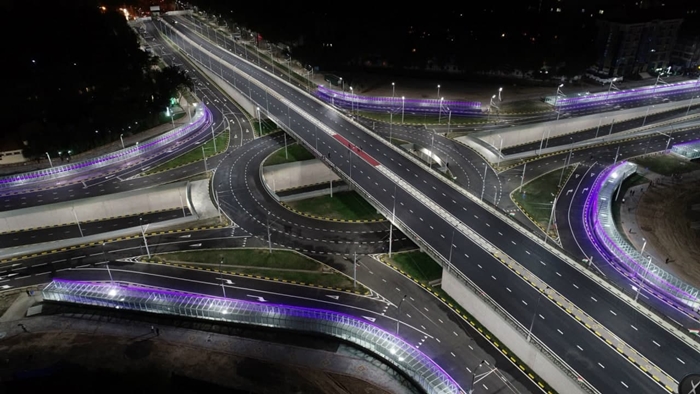Anton Usov
At the Second European Union (EU)-Central Asia Economic Forum at the end of May 2023, the European Bank for Reconstruction and Development (EBRD) presented a study on sustainable transport connections between Central Asia and Europe. Funded by the European Commission, the study identified country-specific needs and measures to reduce transportation costs, increase operational efficiency and step up private-sector participation. These included digitalising transport documents, enhancing the public-private partnership (PPP) environment, facilitating trade, fostering market liberalisation and improving tariff-setting mechanisms.
The study argued that the Trans-Caspian Corridor, which will integrate the countries of Central Asia, could be the best cargo transportation route to complement the Eurasian Northern Corridor running through Russia, which has been affected by geopolitical bottlenecks. It also noted that regional trade within Central Asia will benefit greatly from the upgrading and expansion of this transport corridor.
According to the latest estimates, the volume of cargo moving through the Trans-Caspian International Transport Route (TITR) could, by 2040, significantly increase from the current volume of almost 20,000 20-foot equivalent units (TEUs). With freight steadily increasing along this route, existing Caspian Sea infrastructure might become a bottleneck. The study underlined the need to rehabilitate and modernise rail and road networks, expand rolling stock, improve border crossing points, and build multimodal logistics centres and auxiliary network connections across Central Asia.
In January 2024, at the Investors Forum for EU-Central Asia Transport Connectivity in Brussels, the EBRD expressed its readiness to invest around €1.5 billion in Trans-Caspian Corridor-related infrastructure and associated transport solutions over the next 2-3 years. In addition, at the Brussels Investors Forum, the Ministry of Transport of the Republic of Kazakhstan and the EBRD agreed to cooperate on strategic initiatives in road, rail, port and logistics infrastructure to develop the TITR. According to the memorandum of understanding signed by the EBRD and Kazakhstan, the parties will work to facilitate the increase in freight traffic between Central Asia and Europe through Kazakhstan by implementing necessary reforms and securing the financing needed for sustainable multimodal transport infrastructure.
Some of the priority projects will include the modernisation of container handling equipment and the development of a container terminal at the Aktau Port, double tracking and the electrification of the national railway network, and the development and rehabilitation of key roads.
Building new or upgrading existing infrastructure to cope with the increase in cargo traffic will not be an easy task given Kazakhstan’s sheer size (with an area of 2,700,000 km2, Kazakhstan is the ninth-largest country in the world), but the impact of investment will be material for all countries in Central Asia and beyond. To contribute to intra-regional connectivity, the main east-west route of the new corridor will be linked to the transport networks in the Kyrgyz Republic, Tajikistan, Turkmenistan and Uzbekistan. The Central Asian states will be upgrading north-south connector roads and railways, modernising border crossings and eliminating unnecessary barriers to trade and transportation within the region.
The EBRD has been working for many years with key public- and private-sector companies in the region, such as Kazakhstan Railways (KTZ), to improve the efficiency of their operations and optimise transportation patterns. Last year, the EBRD signed a number of projects in Kazakhstan, which are contributing to the fluidity of cargo traffic across the country and along the TITR. Last year alone, the EBRD supported the expansion of several privately-owned operators of rolling stock and logistics centres across Kazakhstan. The Bank’s funds will be used to increase the efficiency of these dynamic and rapidly developing private companies and will contribute to the greater reliability of supply and distribution of goods for regional and domestic needs.
In the Kyrgyz Republic, the EBRD has financed rail and road projects such as the upgrading of railway infrastructure and maintenance of rolling stock for national railway operator Kyrgyz Temir Jolu and the reconstruction of a 30 km section of the Issyk-Kul Lake ring road.
The TITR, which is critical for regional trade, will benefit from a number of PPP initiatives and sustainable infrastructure projects that are currently being explored by the EBRD. These include the Khorezm regional roads project and the Tashkent-Samarkand road PPP development in Uzbekistan, as well as the upgrading of the Alamedin container station in the Kyrgyz Republic.
All these projects have one common feature: they are designed to ensure the full transparency and predictability of cargo traffic across Central Asia and the Caspian Sea and to boost the confidence of forwarding companies, investors and customers in Europe and Asia.
To better manage stocks and plan trade cycles, companies must know how long it will take their container to travel to their desired destination, and how much it will cost. Modern transportation and efficient logistics are essential to reduce costs, shorten transit time and ultimately integrate Central Asia’s landlocked nations into the global economy. The EBRD stands ready to provide finance and expertise to address these challenges. ///Originally published on the official website of EBRD, 22 February 2024
